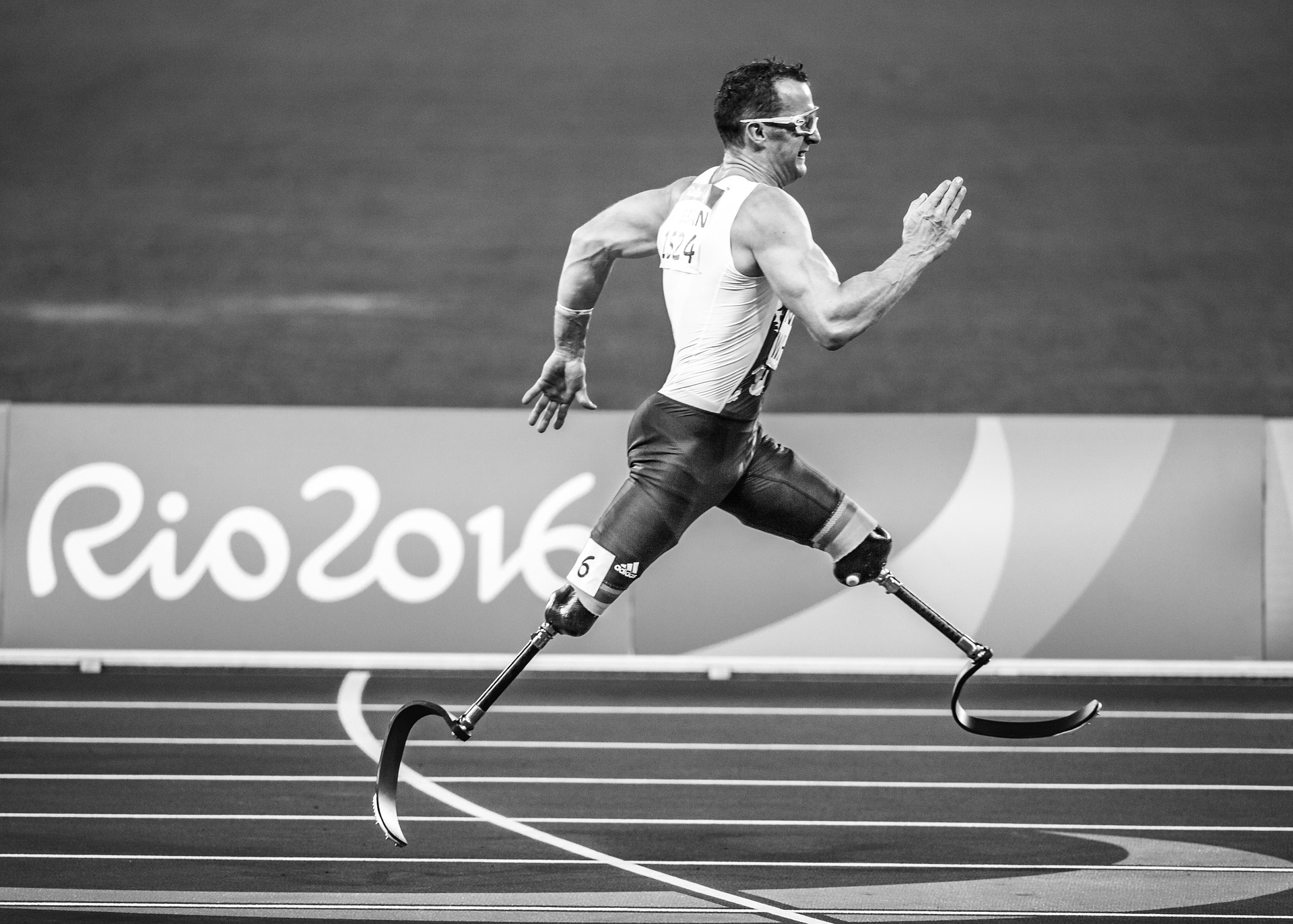Bionic Augmentation in Sports: The Next Frontier of Athletic Enhancement
The fusion of human athleticism and cutting-edge technology is poised to revolutionize competitive sports. As advancements in bionics and prosthetics blur the lines between natural and artificial, athletes with augmented limbs and enhanced capabilities are challenging traditional notions of fairness and pushing the boundaries of human performance. This emerging trend raises profound questions about the future of sports, the nature of competition, and what it means to be an elite athlete in the 21st century.
The Dawn of Bionic Athletics
The concept of bionic augmentation in sports traces its roots to the development of prosthetic limbs for individuals with disabilities. Early prosthetics were rudimentary, designed primarily for basic functionality rather than athletic performance. However, as technology advanced, so did the capabilities of these artificial limbs.
The turning point came in the late 20th and early 21st centuries, with the introduction of carbon-fiber prosthetics. These lightweight, energy-efficient designs allowed amputee athletes to compete at increasingly high levels. The most famous example is Oscar Pistorius, the South African sprinter who became the first double-leg amputee to compete in the Olympics in 2012.
Pistorius’s participation sparked intense debate about the fairness of allowing athletes with prosthetic limbs to compete alongside able-bodied athletes. Some argued that his carbon-fiber blades gave him an unfair advantage, while others contended that they merely leveled the playing field. This controversy laid the groundwork for the current discussions surrounding bionic augmentation in sports.
The Current Landscape of Bionic Sports Technology
Today, bionic augmentation in sports encompasses a wide range of technologies, from advanced prosthetics to neural interfaces. Some of the most promising developments include:
-
Powered exoskeletons: These wearable devices can enhance strength, speed, and endurance. While currently used primarily for rehabilitation, their potential applications in sports are vast.
-
Myoelectric prosthetics: These artificial limbs use electrical signals from the user’s muscles to control movement, offering more natural and precise control than traditional prosthetics.
-
Brain-computer interfaces: These systems allow direct communication between the brain and external devices, potentially enabling athletes to control equipment or prosthetics with their thoughts.
-
Bionic eyes: Advanced ocular implants could enhance visual acuity and provide athletes with superior depth perception and reaction times.
-
Artificial muscles: Synthetic materials that mimic natural muscle tissue could be used to augment or replace damaged muscles, potentially allowing athletes to exceed normal human capabilities.
The Performance Potential of Bionic Augmentation
The potential impact of bionic augmentation on athletic performance is staggering. In some cases, augmented athletes have already demonstrated capabilities that surpass those of their non-augmented counterparts.
For example, in 2016, the Cybathlon, a competition for athletes with bionic assistive devices, showcased the incredible potential of this technology. Competitors using powered exoskeletons completed obstacle courses that would challenge able-bodied athletes, while those with advanced prosthetic arms demonstrated remarkable dexterity and control.
In traditional sports, the effects of bionic augmentation could be equally dramatic. Sprinters with next-generation prosthetic legs might shatter long-standing speed records. Swimmers with webbed bionic hands could revolutionize stroke techniques. Cyclists with augmented cardiovascular systems might climb mountains with unprecedented ease.
However, it’s important to note that the advantages conferred by bionic augmentation are not always straightforward. The integration of artificial limbs or neural interfaces requires extensive training and adaptation. Moreover, the technology itself is still evolving, and its long-term effects on the human body are not yet fully understood.
Ethical and Regulatory Challenges
The rise of bionic augmentation in sports presents a myriad of ethical and regulatory challenges. At the heart of these issues is the question of fairness: How do we ensure a level playing field when some athletes have access to performance-enhancing technology that others do not?
This debate echoes earlier controversies surrounding performance-enhancing drugs, but with added complexity. Unlike doping, which is universally banned in competitive sports, bionic augmentation often serves a legitimate medical purpose for athletes with disabilities. Barring these athletes from competition could be seen as discriminatory.
Sports governing bodies are grappling with these issues in real-time. The International Olympic Committee (IOC) has already had to address the question of prosthetics in competition, as seen in the case of Oscar Pistorius. Their current stance is that such technologies are allowed as long as they do not provide an unfair advantage over other athletes.
However, as bionic augmentation becomes more advanced and widespread, this policy may need to be revisited. Some experts have proposed creating separate categories for augmented athletes, similar to how Paralympic events are organized. Others suggest that all athletes should be allowed to use bionic enhancements, essentially turning sports into a showcase for both human and technological achievement.
The Societal Impact of Bionic Sports
The implications of bionic augmentation in sports extend far beyond the playing field. This technology has the potential to reshape our understanding of human capability and redefine the boundaries between ability and disability.
For individuals with physical impairments, advancements in bionic sports technology offer hope for increased mobility and independence in everyday life. The same prosthetics that allow an athlete to compete at the highest level can also help a person with a disability navigate their daily routine with greater ease.
Moreover, the visibility of augmented athletes in high-profile sporting events can help challenge societal perceptions of disability. By showcasing the incredible feats that are possible with bionic technology, these athletes are breaking down barriers and inspiring others to push their limits.
At the same time, the increasing integration of technology into human performance raises philosophical questions about the nature of sport and competition. If an athlete’s success is due in part to their advanced prosthetics or neural interfaces, does this diminish their achievement? Or does it simply represent the next stage in the ongoing evolution of human athletic capability?
The Future of Bionic Sports
As we look to the future, the potential for bionic augmentation in sports seems limitless. Emerging technologies such as nanotechnology and genetic engineering could further blur the lines between natural and artificial enhancement.
We may see the development of microscopic implants that can boost muscle efficiency or improve oxygen utilization. Genetic modifications could be used to enhance an athlete’s natural abilities or improve their body’s integration with bionic devices. The possibilities are as exciting as they are ethically complex.
One intriguing possibility is the emergence of entirely new sports designed specifically for augmented athletes. These events could showcase the full potential of bionic technology, pushing the boundaries of human-machine integration in ways we can scarcely imagine today.
However, as bionic augmentation becomes more advanced and potentially more accessible, there are concerns about creating a “technological divide” in sports. If only wealthy athletes or nations have access to the latest bionic enhancements, it could exacerbate existing inequalities in global sports competition.
The Role of Education and Public Discourse
As bionic augmentation continues to advance, it’s crucial that we engage in open and informed discussions about its place in sports. Athletes, coaches, sports officials, and the general public all have a stake in these decisions, and their voices should be heard.
Education will play a key role in this process. Understanding the science behind bionic augmentation, its potential benefits and risks, and its broader societal implications will be essential for making informed decisions about its use in competitive sports.
Moreover, these discussions should extend beyond the realm of elite athletics. The technologies being developed for sports have numerous applications in medical rehabilitation, assistive devices for people with disabilities, and even military and industrial settings. By fostering a broader understanding of bionic augmentation, we can ensure that its development serves the widest possible range of human needs and aspirations.
Balancing Progress and Tradition
As we navigate the complex landscape of bionic augmentation in sports, it’s important to strike a balance between embracing technological progress and preserving the fundamental values of athletic competition.
On one hand, sports have always been a showcase for human potential, pushing the limits of what our bodies can achieve. Bionic augmentation represents the next frontier in this ongoing quest for excellence. It offers the possibility of performances that were once thought impossible and could usher in a new era of athletic achievement.
On the other hand, many would argue that the essence of sport lies in the purity of human effort and skill. There’s a certain romanticism to the idea of athletes competing on a level playing field, relying solely on their natural abilities and dedication to their craft. Introducing advanced technology into this equation could, in some eyes, detract from the core values of sportsmanship and fair play.
Finding the right balance will require ongoing dialogue and careful consideration of the ethical, practical, and philosophical implications of bionic augmentation. It may involve creating new categories of competition, revising existing rules and regulations, or fundamentally reimagining what we consider “fair” in the context of sports.
The Ripple Effects on Sports Industry and Culture
The integration of bionic augmentation into sports will likely have far-reaching effects on the entire sports industry and culture. From equipment manufacturers to sports medicine professionals, from broadcasters to fans, every aspect of the sports ecosystem will need to adapt to this new reality.
Equipment manufacturers will need to develop new expertise in bionic technologies, potentially partnering with tech companies or medical device manufacturers. This could lead to exciting innovations not just for elite athletes, but for recreational sports enthusiasts as well.
Sports medicine will evolve to encompass the maintenance and optimization of bionic enhancements. Doctors and therapists will need to understand not just human anatomy and physiology, but also the intricacies of human-machine interfaces and the long-term effects of bionic augmentation on the body.
Broadcasters and media outlets will face the challenge of explaining these new technologies to viewers, potentially revolutionizing the way sports are analyzed and discussed. We might see the emergence of new metrics and statistics to measure the performance of augmented athletes.
For fans, bionic augmentation could change the very nature of sports fandom. Will supporters rally behind athletes with the most advanced technology, or will there be a backlash against what some might see as “artificial” enhancement? The answer may vary across different sports and cultures, adding a new dimension to the global sports landscape.
Legal and Regulatory Frameworks
As bionic augmentation becomes more prevalent in sports, it will be necessary to develop comprehensive legal and regulatory frameworks to govern its use. This will likely involve collaboration between sports governing bodies, medical experts, ethicists, and legal professionals.
Key areas that will need to be addressed include:
-
Safety standards: Ensuring that bionic enhancements meet rigorous safety requirements to protect athletes’ health.
-
Performance thresholds: Establishing limits on the degree of enhancement allowed in different sports or competitions.
-
Testing and verification: Developing protocols to assess whether bionic enhancements provide unfair advantages.
-
Intellectual property: Addressing issues of ownership and patenting of bionic technologies used in sports.
-
Privacy and data protection: Safeguarding athletes’ personal and medical information related to their bionic enhancements.
-
Accessibility and equity: Ensuring fair access to bionic technologies across different socioeconomic backgrounds and geographic regions.
These frameworks will need to be flexible enough to adapt to rapidly evolving technology while still providing clear guidelines for athletes, coaches, and officials.
The Psychological Impact on Athletes
The advent of bionic augmentation in sports will undoubtedly have profound psychological effects on athletes. For those who choose to use these technologies, there may be a period of adjustment as they learn to integrate artificial components into their body schema and athletic performance.
This process of adaptation could be both physically and mentally challenging. Athletes may need to relearn fundamental movement patterns or develop entirely new skills to maximize the potential of their bionic enhancements. This could lead to new forms of sports psychology and mental training techniques specifically tailored to augmented athletes.
Moreover, the psychological pressure on athletes may increase as the stakes of technological enhancement rise. Will athletes feel compelled to undergo potentially risky procedures to stay competitive? How will they cope with the public scrutiny and ethical debates surrounding their use of bionic technology?
On the flip side, for athletes with disabilities, advanced bionic augmentation could be enormously empowering. The ability to compete on par with or even surpass able-bodied athletes could boost confidence and challenge societal perceptions of disability.
Global Perspectives on Bionic Sports
As with many technological advancements, the adoption and acceptance of bionic augmentation in sports are likely to vary across different cultures and regions. Some countries may embrace these technologies enthusiastically, seeing them as a way to gain a competitive edge on the global stage. Others may be more hesitant, preferring to maintain traditional approaches to sports and athletic training.
This could lead to interesting dynamics in international competitions. We might see a divide between nations that allow extensive bionic augmentation and those that limit its use, similar to current disparities in sports science and training resources.
Furthermore, different sports may adopt bionic technologies at different rates. Sports that already rely heavily on equipment and technology, such as cycling or motorsports, might be quicker to incorporate bionic augmentation. More traditional sports with an emphasis on “natural” human performance might resist these changes.
These global differences could spark fascinating debates about the nature of fair competition in an increasingly interconnected world. They may also drive innovation as different regions and sports organizations experiment with various approaches to integrating bionic technology.
The Role of Bionic Sports in Scientific Advancement
While much of the focus on bionic augmentation in sports centers on athletic performance, it’s important to recognize the potential scientific benefits of this field. The development and testing of bionic technologies in the high-stakes, high-performance environment of competitive sports can drive rapid advancements that have applications far beyond athletics.
For instance, prosthetics developed for elite runners could inform the design of more effective and comfortable artificial limbs for everyday use. Neural interfaces created to give athletes split-second control over equipment could lead to breakthroughs in assistive technologies for people with severe disabilities.
Moreover, the data gathered from augmented athletes could provide valuable insights into human physiology and biomechanics. This information could contribute to our understanding of how the human body functions under extreme conditions and how it interacts with artificial enhancements.
In this way, bionic sports could serve as a kind of “laboratory” for testing and refining technologies that ultimately benefit society as a whole. This potential for broader impact might help justify the resources invested in developing these technologies for sports applications.
Preparing the Next Generation
As bionic augmentation becomes more prevalent in sports, it will be crucial to prepare the next generation of athletes, coaches, and sports professionals for this new reality. This preparation should begin at the educational level, with sports science programs incorporating coursework on bionic technologies, human-machine interfaces, and the ethical considerations of technological enhancement.
Young athletes will need guidance on how to navigate the complex landscape of bionic augmentation. This might include education on the potential risks and benefits, the legal and ethical implications, and the importance of making informed decisions about their bodies and careers.
Coaches and trainers will need to develop new skills to work effectively with augmented athletes. This could involve understanding the capabilities and limitations of different bionic technologies, adapting training methods to optimize human-machine performance, and addressing the unique psychological aspects of competing with artificial enhancements.
Sports administrators and officials will also need specialized training to manage competitions that include augmented athletes. This might involve learning new testing protocols, understanding the technical aspects of bionic enhancements, and developing strategies for ensuring fair play in an increasingly technologically complex sporting environment.
Conclusion: Embracing the Bionic Future of Sports
As we stand on the cusp of a new era in athletics, the integration of bionic augmentation into sports presents both unprecedented challenges and extraordinary opportunities. This emerging field has the potential to redefine our understanding of human performance, challenge our notions of fairness and competition, and push the boundaries of what we thought possible in sports.
While the ethical and regulatory hurdles are significant, the potential benefits of bionic sports extend far beyond the realm of athletics. From advancing medical technologies to challenging societal perceptions of disability, the impact of this field could be truly transformative.
As we move forward, it will be crucial to approach the development and implementation of bionic augmentation in sports with thoughtfulness, transparency, and a commitment to ethical principles. By fostering open dialogue, investing in education, and carefully considering the broader implications of these technologies, we can work towards a future where bionic sports enhance rather than diminish the values of athletic competition.
The journey into the bionic future of sports is just beginning. It promises to be an exciting and challenging adventure that will test not just our physical limits, but our creativity, our ethics, and our vision of what sports can be. As we embrace this new frontier, we have the opportunity to shape a future where technology and human achievement come together to create something truly extraordinary.






